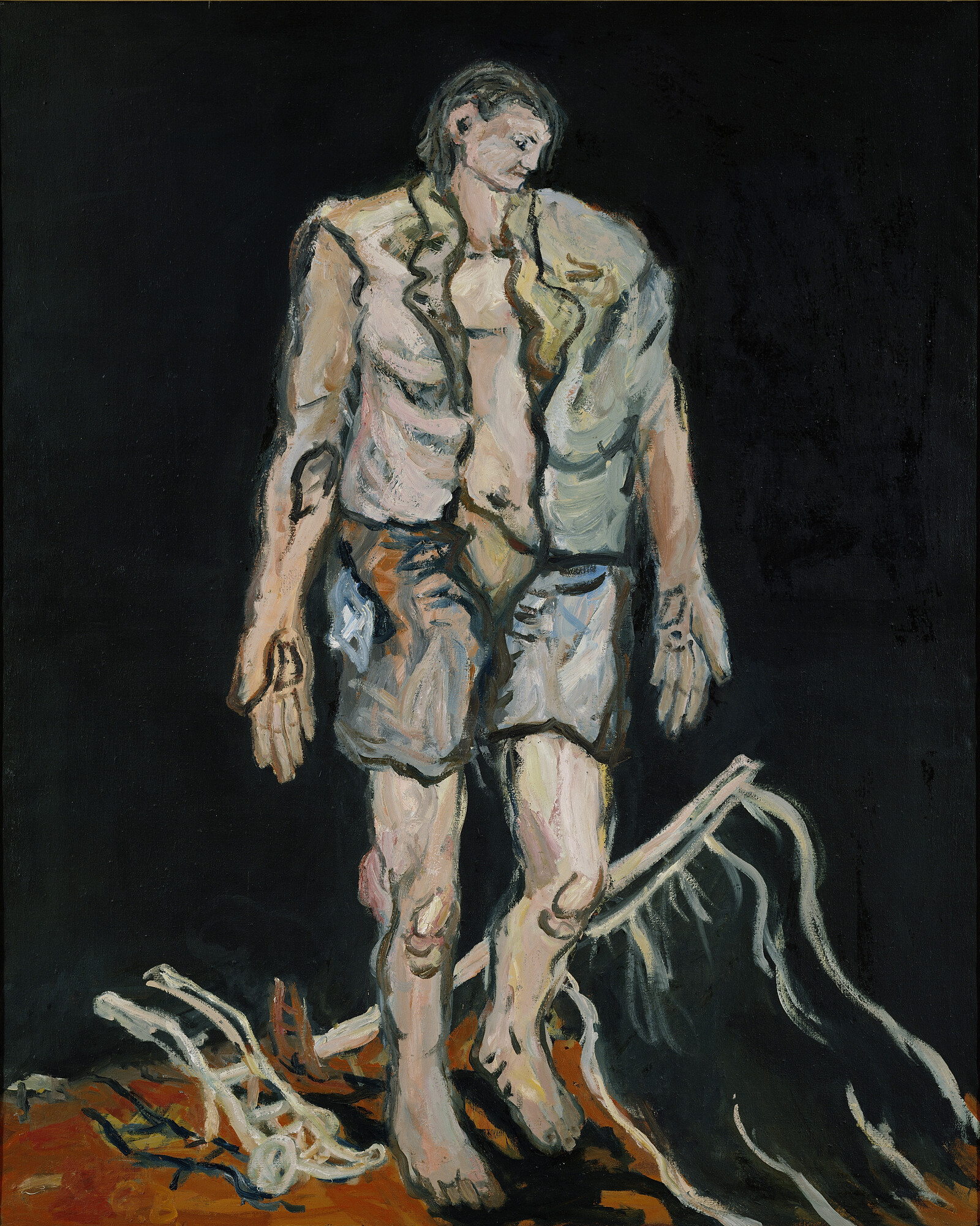The Heroes
June 30–October 23, 2016
Schaumainkai 63
60596 Frankfurt am Main
Germany
T +49 69 605098200
F +49 69 605098111
info@staedelmuseum.de
Georg Baselitz (b. 1938) definitely ranks among the most influential painters and sculptors of our time. His powerful workgroup of “Heroes” and “New Types” is regarded as a key achievement of 1960s German art all over the world. From June 30 to October 23, 2016, the Städel Museum is presenting Georg Baselitz’s famous “Heroes” in a comprehensive monographic special exhibition 50 years after the paintings’ making. In the exhibition curated by Max Hollein some 70 paintings and works on paper are on view: their aggressively and defiantly painted monumental figures have lost nothing of their ambiguous, portentous and vulnerable quality to this day. The fragility and contradictory nature of the “Heroes” in terms of contents find their formal equivalent. The consistently frontal depiction and central placement of the clearly outlined figures contrast with the wildness of the artist’s palette and the vehemence of his painting style. Loans from important international museums and private collections offer the public a wide-ranging view of these icons of German postwar art conceived by the only 27 year old artist in a spurt of explosive productivity in 1965/1966. After its début at the Städel Museum, the major exhibition will travel to the Moderna Museet Stockholm, the Palazzo delle Esposizioni in Rome, and the Guggenheim Museum Bilbao.
“The ‘Heroes’ are both a landmark and a fervent pivot in Georg Baselitz’s oeuvre. They have sprung from a deep, inner necessity in a deliberate confrontation with pressing, charged subjects and unfold a timeless reflection on the artist’s existence as such. Giving expression to strikingly visualized and self-felt isolation, uprooting, and lack of orientation, the works render the artist’s precarious state of experience in a broken world, establishing a paradigmatic image of his condition,” says Max Hollein, curator of the show.
In 1965, Georg Baselitz found himself faced with an order destroyed in multiple ways: 20 years after the end of World War II, ideologies and political systems, as well as artistic styles, were up for discussion. This lack of systems of order was very much in keeping with the artist’s own nature: appropriation through artistic categorization is something that has remained foreign to him throughout his life. Fundamentally skeptical, Baselitz emphasized the equivocal aspects of his time. Breathing failure and resignation, his monumental “Heroes” in their tattered battle dress evince an accordingly contradictory character. That the artist devoted himself to the subject of “Heroes” or “Types” at all at that time was a provocation in itself. (Male) heroism and its one-time exponents had been called into question by the war and the postwar period. Figures from a presumably buried past are brought back to life, picturing a reality which was anything but welcome in the German Federal Republic’s success story of the economic miracle—and this in the supposedly obsolete form of figurative painting. Yet the artist was concerned with far more than general issues of society. In numerous role depictions, Baselitz visualized his individual stance and his personal path as a painter. In a staggering act of self-assertion and identity definition that ran contrary to the prevailing currents of the time, he reflected on his own position vis-à-vis the society in which he lived.
The exhibition Georg Baselitz. The Heroes is sponsored by Goldman Sachs.
A catalogue accompanying the exhibition will be published by Hirmer. Edited by Max Hollein and Eva Mongi-Vollmer, it comprises a foreword by Max Hollein and contributions by Uwe Fleckner, Max Hollein, Alexander Kluge, Richard Shiff, and Eva Mongi-Vollmer. German and English edition, c. 172 pages.
An elaborately designed “digitorial”—available at baselitz.staedelmuseum.de—will provide comprehensive insights into key premises and works of the exhibition.
Curator: Max Hollein, director, Fine Arts Museums of San Francisco
Co-curator: Dr Eva Mongi-Vollmer, Städel Museum
Press contact: Axel Braun (Head of Press/Public Relations):
T (+49 69) 605098 170 / F (+49 69) 605098 188 / presse [at] staedelmuseum.de
Press material: click here


